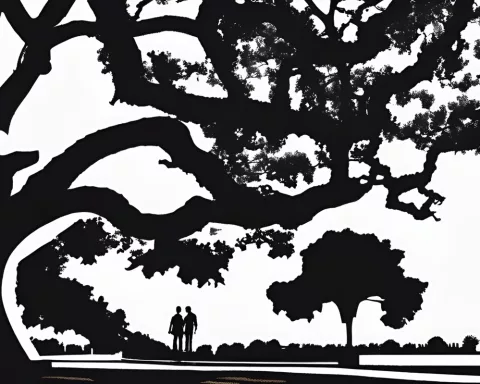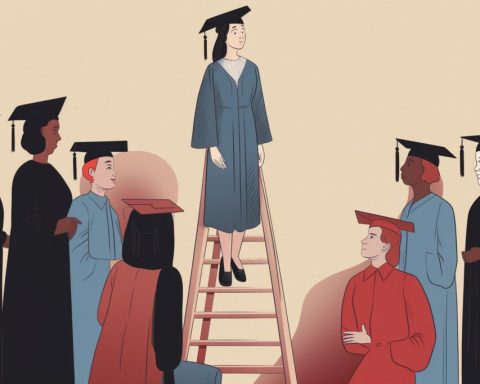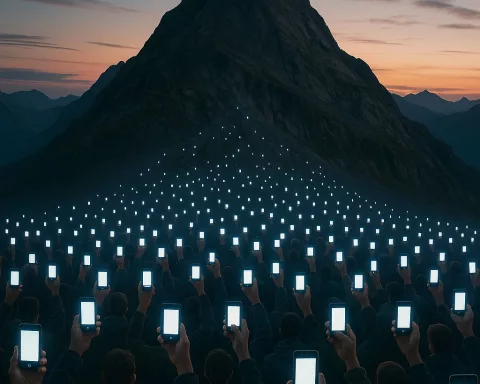On April 15, 2025, a peaceful student protest at Walter Sisulu University over no running water turned deadly when the residence warden fired shots, killing one student and injuring others. The campus, once lively and hopeful, was thrown into chaos and fear. The university’s cold response deepened students’ anger and mistrust, sparking nationwide calls for justice and safer schools. This tragedy showed how deep problems like neglect and broken trust can turn a place of learning into a battleground. Yet, amid grief, students stood strong, demanding change and hoping to heal their broken campus.
What happened during the tragedy at Walter Sisulu University in April 2025?
On April 15, 2025, a student protest over lack of running water escalated into violence at Walter Sisulu University’s Mthatha campus. The residence warden allegedly opened fire, resulting in one student’s death, injuries, and widespread campus unrest, highlighting issues of campus safety and institutional mistrust.
Section 1: A Campus Awakens to Crisis
The sun rose over Mthatha on April 15, 2025, revealing not a campus immersed in scholarly routine, but one gripped by turmoil and heartbreak. Walter Sisulu University’s Mthatha campus, which should have welcomed another day of lectures and student camaraderie, instead faced chaos: chants of protest filled the air, soon drowned out by the sound of gunfire. What began as an ordinary morning swiftly transformed into a crisis that would prompt nationwide reflection on campus safety, institutional accountability, and the very purpose of higher education in South Africa.
For days leading up to the tragedy, frustration simmered among students. Dormitories overflowed with complaints, and the campus buzzed with discontent—nowhere more sharply than around the persistent lack of running water in student residences. This basic necessity, so often taken for granted, became the rallying point for grievances that had been brewing for months. Students voiced anger over what they saw as administrative neglect, slow responses from university officials, and an overwhelming sense of being forgotten by those charged with their welfare.
Against this backdrop, students organized a protest in the early hours of Tuesday. True to South Africa’s storied tradition of student activism, demonstrators began with song and unity, brandishing hand-painted signs and stamping their feet in time with protest chants. Yet, as tempers flared, the focus of their outrage narrowed on the residence warden—the figure seen as the face of an unresponsive administration.
Section 2: From Protest to Tragedy
By dawn, a crowd had assembled outside the warden’s on-campus home, where he lived with his wife and two children. Tensions ran high. According to statements from Acting District Commissioner Brigadier Vukile Ntuli, the demonstration escalated rapidly. Students confronted the warden, hurling accusations and, soon after, stones. Fear and confusion enveloped the household as the shouting intensified. In those chaotic moments, the warden allegedly opened fire.
The outcome scarred the university community. A young man lost his life, his identity initially contested by the institution’s officials. Two students sustained injuries, while the warden’s wife was left in critical condition and rushed to the hospital. Police arrived to extract the warden and his children from the volatile scene. The campus, usually alive with the promise of learning and social connection, instead echoed with panic and the sobering aftermath of violence.
Walter Sisulu University’s public statement about the incident appeared on its official Facebook page later that day. University leadership cited forced entry into the staff residence and expressed concern for all involved. However, the message’s impersonal tone and focus on property sparked an outpouring of criticism online. Social media filled with accusations of insensitivity, a lack of transparency, and a demand for genuine accountability. “We want answers, not bureaucratic platitudes,” wrote one commenter, capturing the widespread frustration that institutional responses often seem to sidestep the human cost of such tragedies.
Even the question of the deceased’s identity became a source of conflict. Though students produced a student card and his mother identified him as her son, university leaders insisted that no such name appeared in their current enrollment records. Ndiyakholwa Ngqulu, Director of Special Projects in the Vice-Chancellor’s office, stuck to the official line, citing closed registration and up-to-date databases. This bureaucratic response only deepened mistrust, as many felt the university’s record-keeping failed to recognize the lived reality of its community.
Section 3: A Crisis Resonates Across South Africa
The tragedy at Walter Sisulu University soon drew national attention. Higher Education Minister Nobuhle Nkabane condemned the violence, reminding the public that universities should serve as sanctuaries for learning, dialogue, and personal development—not as battlegrounds. She dispatched her spokesperson, Camagwini Mavovana, to demand a comprehensive account of the incident from university officials and promised further investigation. For many students, however, these gestures seemed disconnected from the urgent pain and anxiety now gripping the Mthatha campus.
South Africa’s universities have long functioned as hotbeds of activism, from the anti-apartheid struggles of the late 20th century to more recent campaigns like #FeesMustFall. Traditionally, campuses have offered spaces where ideals are forged, tested, and debated. The violence at Walter Sisulu University, however, signals a troubling departure—the boundaries between protest and outright danger have blurred, raising questions about the ability of universities to protect their communities.
Anecdotes and commentary soon flooded social media. Alumni mourned what they saw as the transformation of their university into something resembling a movie set, where staff and students alike faced unthinkable threats. Others questioned why residence managers felt compelled to arm themselves. Was this the new normal, they asked, that those charged with students’ care must now prepare for violence rather than foster dialogue? Such questions reflected not only shock at the day’s events but a broader anxiety about the militarization of campus life and the erosion of academic sanctuaries.
Section 4: Searching for Accountability, Safety, and Hope
Behind the trending hashtags and viral videos, the Walter Sisulu University shooting highlights deeper fault lines in South African higher education. Campuses, especially those in less affluent areas, remain deeply shaped by the legacies of apartheid—unequal access, under-resourced infrastructure, and persistent social divides. The continuing struggle for basic dignity, such as reliable water provision, reflects the ongoing impact of historical injustice and the state’s uneven ability to meet student needs.
The incident also raises urgent questions about campus security and institutional governance. When administrators feel compelled to carry weapons, the essential trust between students and staff crumbles. In Europe, universities developed as sanctuaries for thought and debate, shielded from violence. In South Africa, though, the aftermath of state repression and the prevalence of private security forces have fundamentally altered that dynamic. The arming of non-police staff marks a disturbing shift—one that signals a breakdown in communication and a retreat from the core values of education.
Responses from civil society and the arts have often provided both solace and critique in the wake of national tragedies. South African artists and writers like Njabulo Ndebele and William Kentridge have long explored the wounds that public violence leaves in private lives. In the days following the shooting, students organized vigils, created protest art, and wrote songs to honor the victim and process their collective grief—actions that provided some measure of healing where official statements fell short.
Education activist Hendrick Makaneta, speaking to news outlets, called for decisive reform. He demanded that universities recommit to their role as protectors of students, not as sites of conflict. His message resonated with parents, students, and observers who saw in the tragedy a dangerous pattern: too many campuses remain vulnerable to mismanagement, violence, and the loss of their essential mission as places of safety and growth.
In the digital sphere, outrage and mourning blended together. “Why are staff using live ammunition on unarmed students?” wondered one Twitter user, their question echoing the disbelief of many. Others drew connections between this incident and broader political disillusionment, referencing corruption, mismanagement, and a pervasive sense that the country’s institutions had abandoned its youth. Online, students and supporters staged a virtual protest, amplifying demands for justice and systemic change.
As investigations proceed, fundamental questions remain. Why did the demonstration spiral into deadly violence? What training and resources do university staff have for responding to unrest? Could earlier mediation or more responsive governance have prevented tragedy, or had deep-seated frustrations already made conflict inevitable?
The events of April 15 at Walter Sisulu University capture the hopes and hazards of South African society at large. Here, historical memory, passionate advocacy, and institutional fragility collide. The campus—once a beacon of opportunity and advancement—now reels from grief and uncertainty. In the aftermath, students gather in quiet circles, their conversations circling a painful question: how did their university, meant to be a haven, become the stage for such heartbreak? The answer remains elusive, but their determination to seek justice and reclaim their sanctuary endures.
FAQ: The Walter Sisulu University Tragedy
1. What exactly happened during the tragedy at Walter Sisulu University on April 15, 2025?
On April 15, 2025, a student protest at Walter Sisulu University’s Mthatha campus over the lack of running water escalated when the residence warden allegedly opened fire. One student was killed, several others were injured, and the warden’s wife was critically wounded. The incident caused widespread unrest and fear on campus, exposing deep issues of campus safety, administrative neglect, and mistrust between students and university officials.
2. What triggered the student protest that led to the violence?
The protest was sparked by the persistent lack of running water in student residences—a basic necessity that had long been neglected. This issue symbolized broader frustrations with poor infrastructure, slow administrative responses, and a sense of abandonment by university management. Students organized a peaceful demonstration that unfortunately escalated after tensions peaked near the residence warden’s home.
3. How did the university respond to the tragedy and the students’ concerns?
The university issued a public statement expressing concern for those involved and citing forced entry into staff residence as part of the incident. However, the response was widely criticized for being cold and impersonal, focusing more on property damage than human loss. There was also controversy regarding the identity of the deceased student, with university officials disputing enrollment records, which further deepened mistrust among students and the public.
4. What has been the wider impact of this incident on South African higher education?
The tragedy sparked national outrage and renewed debates about campus safety, institutional accountability, and the role of universities as safe spaces for learning and activism. It highlighted the ongoing challenges faced by universities in less affluent areas, including under-resourced facilities and fractured relationships between students and staff. The incident also raised concerns about the increasing militarization of campus security and the erosion of trust within educational institutions.
5. What actions have been taken by government and civil society in response?
Higher Education Minister Nobuhle Nkabane condemned the violence and called for a full investigation. Civil society groups, education activists, and artists have engaged in protests, vigils, and creative expressions to honor the victim and call for reform. Activists demand safer campuses, better governance, and a recommitment to universities as places of learning rather than conflict.
6. What does this tragedy mean for the future of student activism and campus life in South Africa?
Walter Sisulu University’s tragedy marks a troubling shift where traditional student activism risks being overshadowed by violence and mistrust. It raises urgent questions about how universities can protect students while fostering open dialogue and peaceful protest. The incident underscores the need for systemic reforms, improved infrastructure, and trust-building measures to ensure campuses remain sanctuaries for education and social progress in South Africa.











